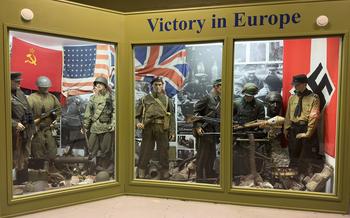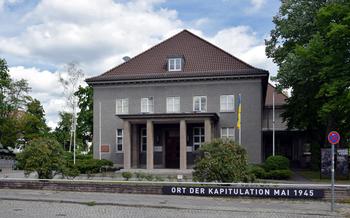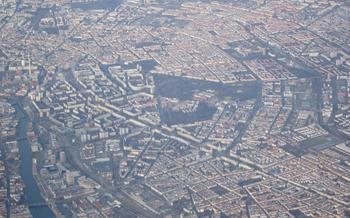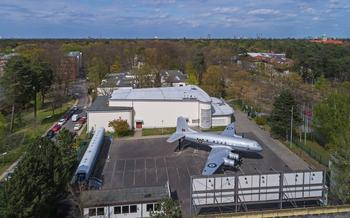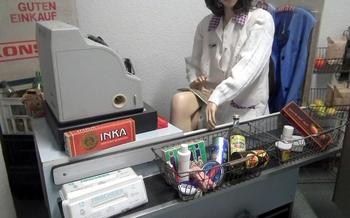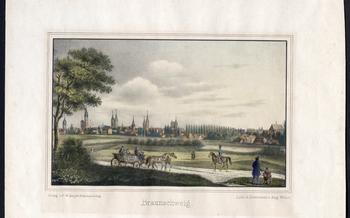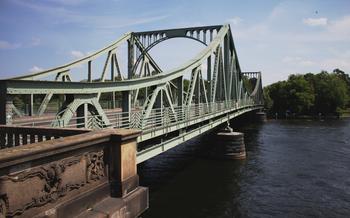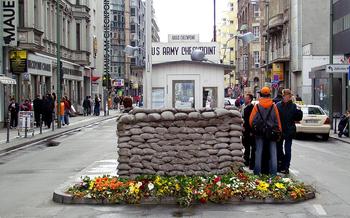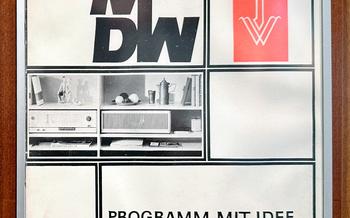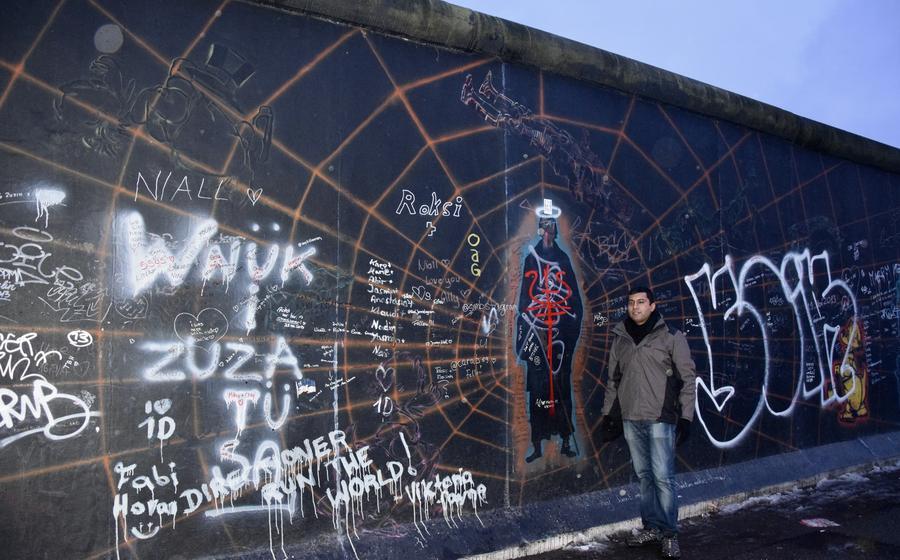
East Side Gallery
- The East Side Gallery: A Monument to Freedom and Change
- Beyond the Wall: Exploring the History of Divided Berlin
- Art and Activism: The Power of Street Art
- Interactive Experiences: Engaging with the Artwork
- Freedom and Unity: The Legacy of the East Side Gallery
- Practical Information: Planning Your Visit
- Capturing the Moment: Photography at the East Side Gallery
- Berlin's Street Art Scene: Beyond the East Side Gallery
- Historical Context: The Berlin Wall and Its Fall
- Artistic Techniques and Styles: Exploring the Murals
- Personal Reflections: My Experience at the East Side Gallery
- Recommended Tours: Exploring the Gallery with Experts
- Insider Tip: Discover Hidden Gems Near the East Side Gallery
The East Side Gallery: A Monument to Freedom and Change
The East Side Gallery is a powerful testament to the power of art and the human spirit. This iconic stretch of the Berlin Wall has been transformed into a vibrant canvas, featuring a collection of thought-provoking murals created by artists from around the world. Each artwork tells a unique story of freedom, unity, and hope, reflecting the momentous changes that swept through Germany and Europe after the fall of the Wall.
Located along Mühlenstraße in the Friedrichshain-Kreuzberg district, the East Side Gallery is easily accessible by public transportation or on foot. The gallery is open 24 hours a day, allowing visitors to explore the murals at their leisure. Among the must-see artworks is Birgit Kinder's "Test the Best," which depicts a Trabant car breaking through the Wall, symbolizing the breaking of barriers and the pursuit of freedom. Another iconic mural is "My God, Help Me to Survive This Deadly Love," created by Dmitri Vrubel, which features a passionate kiss between Leonid Brezhnev and Erich Honecker, two former leaders of the Soviet Union and East Germany, respectively. These murals, along with many others, offer a glimpse into the hopes and aspirations of a nation emerging from decades of division and oppression.
Beyond the Wall: Exploring the History of Divided Berlin
The East Side Gallery stands as a powerful testament to the tumultuous history of Berlin, a city once divided by the infamous Berlin Wall. This concrete barrier, erected in 1961, physically and ideologically separated East and West Berlin for over 28 years. The wall became a symbol of oppression and division, a stark reminder of the Cold War tensions that gripped the world.
The East Side Gallery reflects the dramatic changes that unfolded after the fall of the Berlin Wall in 198The once-dreaded barrier transformed into a canvas for artistic expression, as artists from around the world flocked to Berlin to leave their mark on history. Their murals celebrated freedom, unity, and the triumph of the human spirit over oppression.
Personal stories and anecdotes of life in divided Berlin add a poignant dimension to the experience of visiting the East Side Gallery. Former residents share their memories of living in a city cut in two, of families separated, and of the challenges and triumphs of everyday life behind the Wall. These personal narratives bring history to life, offering visitors a deeper understanding of the complexities and struggles of that era.
Art and Activism: The Power of Street Art
The East Side Gallery is not just a testament to history but also a vibrant platform for artistic expression and activism. Street art has long been a powerful tool for shaping political and social movements, and the gallery has become a canvas for artists to convey their messages to the world.
One of the most iconic murals is titled "Break the Wall," created by Thierry Noir shortly after the fall of the Berlin Wall. Depicting a Trabant car bursting through the concrete barrier, it symbolizes the unstoppable force of freedom and change. Another notable work is Birgit Kinder's "Test the Best," featuring a man hammering away at the Wall, representing the collective effort to dismantle oppressive structures.
The gallery also includes thought-provoking pieces that address global issues. For example, Dmitri Vrubel's "My God, Help Me to Survive This Deadly Love," depicts Soviet leader Leonid Brezhnev and East German leader Erich Honecker in a passionate kiss, commenting on the complex relationship between the two countries.
Through these powerful murals, the East Side Gallery not only commemorates the past but also sparks conversations about contemporary social and political issues, reminding us of the enduring power of art to challenge, inspire, and transform.
Interactive Experiences: Engaging with the Artwork
The East Side Gallery offers a range of interactive experiences that allow visitors to engage with the artwork on a deeper level. Guided tours led by experienced historians or art experts provide insights into the history, symbolism, and techniques behind the murals. These tours offer a unique opportunity to learn about the significance of the artwork and the stories behind its creation.
For those who prefer a self-guided experience, audio guides are available in multiple languages. These guides offer detailed commentaries on selected murals, providing historical context and artistic interpretation. Workshops and educational programs are also organized for schools and groups, allowing participants to create their own street art inspired by the East Side Gallery.
In addition, virtual tours and online resources are available for those who cannot visit the gallery in person. These virtual experiences offer a comprehensive exploration of the murals, including high-resolution images, interactive maps, and historical information. Through these various interactive experiences, visitors can gain a deeper understanding of the East Side Gallery and its significance as a symbol of freedom, unity, and artistic expression.
Freedom and Unity: The Legacy of the East Side Gallery
The East Side Gallery stands as a testament to the power of art to inspire change and promote reconciliation. Its murals have become iconic symbols of German reunification and the triumph of freedom over oppression. Through its vibrant artwork, the gallery has played a crucial role in shaping the identity of modern Berlin, a city that has emerged from a tumultuous past to become a vibrant and cosmopolitan hub.
The East Side Gallery has become a place of pilgrimage for people from all over the world who come to witness the transformative power of art and to pay homage to the struggle for freedom. It serves as a reminder of the resilience of the human spirit and the importance of standing up against injustice and oppression. The gallery's legacy continues to inspire and empower people around the world, reminding us that even in the darkest of times, art can be a beacon of hope and a catalyst for positive change.
Practical Information: Planning Your Visit
The East Side Gallery is open 24 hours a day, seven days a week, allowing visitors to explore it at their convenience. There is no admission fee, making it an accessible cultural attraction for travelers. To avoid the crowds and fully appreciate the artwork, aim to visit during the early morning or late evening hours. The gallery is also well-lit at night, providing a magical ambiance for an evening stroll.
For a more in-depth experience, guided tours are available in various languages and offer insights into the history and significance of the murals. Audio guides are also available for self-guided tours, providing detailed information on each artwork. The East Side Gallery is committed to accessibility, with ramps and designated areas making it accessible for visitors with disabilities.
Capturing the Moment: Photography at the East Side Gallery
The East Side Gallery is a treasure trove for photography enthusiasts, offering endless opportunities to capture stunning images of the iconic murals. Here are some tips to help you make the most of your photography experience:
-
Composition: Experiment with different angles and perspectives to create dynamic compositions. Move closer to capture details or step back for a broader view.
-
Lighting: The best time to visit the gallery for photography is during the golden hours of sunrise and sunset when the warm light casts a soft glow on the murals, creating captivating shadows and highlights.
-
Camera Settings: Use a wide-angle lens to capture the full scale of the murals and avoid distortion. Set your ISO to a low value to minimize noise and maintain image quality.
-
Storytelling: Look for moments of interaction between people and the artwork, capturing the emotions and experiences of visitors as they engage with the murals.
-
Details: Zoom in to capture the intricate details and textures of the artwork, revealing the hidden stories and symbolism behind each mural.
-
Editing: Use post-processing software to enhance your photos, adjusting colors, contrast, and sharpness to bring out the vibrancy of the artwork.
Berlin's Street Art Scene: Beyond the East Side Gallery
While the East Side Gallery remains one of the most iconic street art destinations in Berlin, the city is home to a vibrant and diverse street art scene that extends far beyond this iconic stretch of wall. From the colorful murals of Kreuzberg to the stencil art of Friedrichshain, Berlin's streets are adorned with a vast array of artistic expression.
Take some time to explore other street art hotspots in Berlin, such as the RAW Gelände, an old railway depot turned creative hub, or the Wrangelkiez neighborhood, known for its concentration of independent galleries and studios. Discover notable street artists like El Bocho, known for his large-scale figurative murals, or Blu, a master of political and social commentary through his striking street art.
Immerse yourself in Berlin's underground art culture by attending street art tours, workshops, or exhibitions. Learn about the history and techniques of street art, and engage with local artists who are shaping the city's creative landscape. Berlin's street art scene is constantly evolving, offering a dynamic and ever-changing canvas for artistic expression.
Historical Context: The Berlin Wall and Its Fall
The Berlin Wall, a symbol of division and oppression during the Cold War, played a pivotal role in shaping the history of Germany and Europe. Constructed in 1961 by the German Democratic Republic (GDR) to prevent its citizens from escaping to the West, the Wall became a physical and ideological barrier that separated families, friends, and communities.
In the years that followed, the Berlin Wall became a flashpoint of tension between the East and West. Numerous attempts to cross the Wall resulted in tragic incidents, including the deaths of many who dared to defy the heavily guarded border. The fall of the Berlin Wall on November 9, 1989, marked a turning point in history. Peaceful protests and the courage of the East German people led to the opening of the border crossings, paving the way for the reunification of Germany and the end of the Cold War.
The fall of the Wall had a profound impact not only on Germany but also on the entire world. It symbolized the triumph of freedom over oppression and inspired movements for democracy and human rights around the globe. Today, the East Side Gallery stands as a reminder of this momentous event, a testament to the power of the human spirit and the enduring legacy of the Berlin Wall.
Artistic Techniques and Styles: Exploring the Murals
The murals at the East Side Gallery showcase a diverse range of artistic styles and techniques, reflecting the varied backgrounds and influences of the artists who created them. From traditional graffiti to intricate paintings and collages, each mural tells a unique story through its visual elements.
Graffiti, with its bold lines and vibrant colors, is a prominent style seen throughout the gallery. Artists used spray paint to create striking images and text-based messages, often conveying political or social commentary.
Painting, with its more detailed and nuanced approach, allows artists to express complex narratives and emotions. Murals such as Birgit Kinder's "Test the Best" and Thierry Noir's "World People" showcase the artists' mastery of color, composition, and symbolism.
Collage, incorporating found objects and materials, adds a unique dimension to the murals. Artists like Barbara Kruger and Klaus Staeck used collage to create thought-provoking juxtapositions and visual metaphors, challenging viewers to question established norms and perspectives.
The East Side Gallery is a living testament to the power of street art to convey powerful messages and spark social change. Through their diverse artistic techniques and styles, the muralists have created a collective masterpiece that continues to inspire and challenge viewers worldwide.
Personal Reflections: My Experience at the East Side Gallery
Visiting the East Side Gallery was a profound and moving experience that left an indelible mark on my soul. As I strolled along the vibrant stretch of murals, I was overwhelmed by a sense of awe and inspiration. The artwork spoke volumes about the power of art to transcend boundaries, heal wounds, and unite people.
Each mural told a unique story, capturing the essence of the struggle for freedom, the joy of reunification, and the hope for a better future. I was particularly drawn to the iconic painting of the Trabant breaking through the wall, a symbol of the indomitable spirit that propelled the fall of the Berlin Wall.
The East Side Gallery is not just a collection of artwork; it is a living testament to the resilience of the human spirit. It is a place where history and art intertwine, creating a powerful narrative that continues to resonate with visitors from all corners of the globe.
Recommended Tours: Exploring the Gallery with Experts
Visiting the East Side Gallery with an experienced guide can enhance your understanding and appreciation of the artwork. Local historians and art experts offer guided tours that provide insights into the historical context, symbolism, and techniques behind the murals. These tours often include anecdotes and personal stories, bringing the history of the gallery to life.
When choosing a tour, consider your interests and preferences. Some tours focus on the political and historical aspects of the gallery, while others delve into the artistic techniques and styles used by the muralists. There are also tours tailored to specific themes, such as women in street art or the role of art in social movements.
Joining a guided tour is a great way to learn more about the East Side Gallery and its significance. It also allows you to ask questions and engage in discussions with knowledgeable experts. Whether you're a history buff, an art enthusiast, or simply curious about Berlin's past, a guided tour will provide a deeper and more meaningful experience.
Insider Tip: Discover Hidden Gems Near the East Side Gallery
Beyond the iconic murals of the East Side Gallery, the surrounding area is a treasure trove of hidden gems waiting to be discovered. Immerse yourself in the vibrant neighborhood of Friedrichshain, known for its eclectic mix of art studios, vintage shops, and lively bars. Explore the nearby Simon-Dach-Straße, a charming street lined with cozy cafes, independent boutiques, and street art. For a unique perspective, take a stroll along the banks of the Spree River, offering stunning views of the city and a chance to spot hidden sculptures and graffiti. Don't miss the iconic Oberbaumbrücke, a double-decker bridge that connects Friedrichshain with Kreuzberg, adorned with colorful murals and offering panoramic city views. By venturing beyond the main tourist spots, you'll uncover the authentic charm of Berlin and experience the city like a local.

